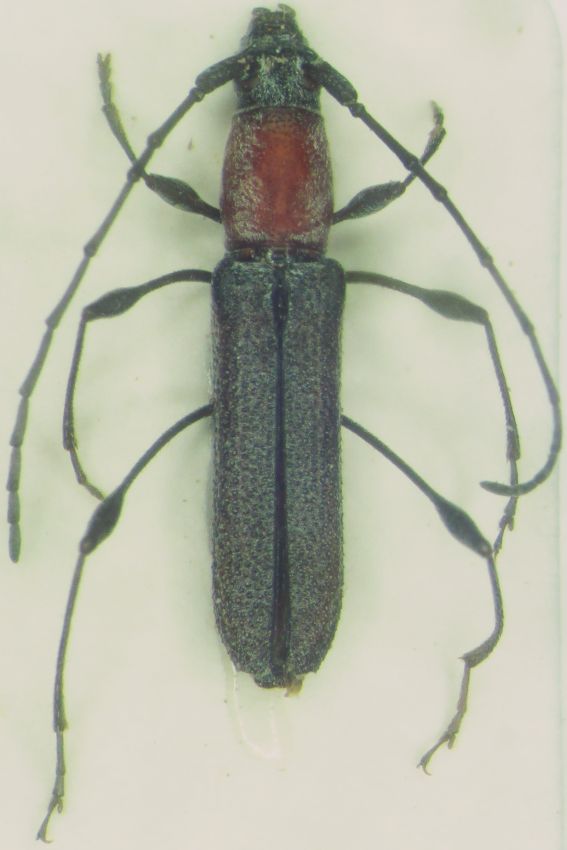| T O P I C R E V I E W |
| Robert |
Posted - 06/02/2016 : 09:28:31

60.92 KB
USA, Texas, Live Oak County. 6 mm
Rhopalophora sp. |
| 6 L A T E S T R E P L I E S (Newest First) |
| Francesco |
Posted - 10/02/2016 : 15:09:53
quote:
Originally posted by dryobius
These are classic examples of species that have slight differences as you go from one side of their range to the other. When comparing a specimen from the east against one from the west, you think they are different, but when you have a long series from intermediate localities it becomes likely that they are not that different genetically.
Based on what you're saying, longipes and bicolorella seem to be subspecies of only one species. |
| dryobius |
Posted - 10/02/2016 : 14:50:33
I'll check my specimens later, however there are comments in the literature (i.e. Hovore, Penrose & Neck 1987, and again in Giesbert & Chemsak's revision) discussing the difficulty of comparing populations of longipes (an eastern American species) with bicolorella (a southwestern American species).
Live Oak County TX, is a place many collectors have visited and is on the edge of the desert scrub habitat so there is a convergence of eastern and southern species in the area.
Giesbert notes that bicolorella exhibits a lot of variation in color and form. There are many other Texas Cerambycidae that have minor differences (or none at all) and we seem to rely on whether they are from South Texas, East Texas or West Texas in order to identify them.
These are classic examples of species that have slight differences as you go from one side of their range to the other. When comparing a specimen from the east against one from the west, you think they are different, but when you have a long series from intermediate localities it becomes likely that they are not that different genetically. |
| Robert |
Posted - 09/02/2016 : 18:59:29
The bicolorella you have from Live Oak Co., do they have the last antennal segment slightly longer than the 10th? |
| dryobius |
Posted - 09/02/2016 : 17:08:00
The type locality of bicolorella is Arizona. Populations in south Texas aren't identical but it is not really so different that you could describe another species. I have this species from your locality plus a long series from hidalgo county. Rhopalophora always show a little variability when comparing disjunct populations. I always hate to identify single specimens like this but I have seen lots of rhopalophora from there. |
| Robert |
Posted - 08/02/2016 : 04:58:30
I tried to use Giesbert's key on this one, but I am getting nowhere. I end up at bicolorella but this species is supposed to have its last antennal segment slightly shorter than the tenth, which is clearly not the case here. It seems it is not angustata either, as the pronotum is distinctly punctate and the head is black. And you were right to say it is not rugicollis. |
| dryobius |
Posted - 07/02/2016 : 23:22:15
I think your two Rhopalophora are the same, but sometimes the features are variable.
By process of elimination... It is NOT cupricollis, longipes, meeskei, ... That leaves rugicollis, angustata, and bicolorella.
It doesn't look like rugicollis. Bicolorella from Texas are different from ones from Arizona (difficult to explain here).
I'm thinking these are angustata which occurs in south and south central Texas.
Giesbert's key works fairly well. I've collected all the species in Texas and most of them in many different locations and when you have a lot to look at then they are easier to identify |


